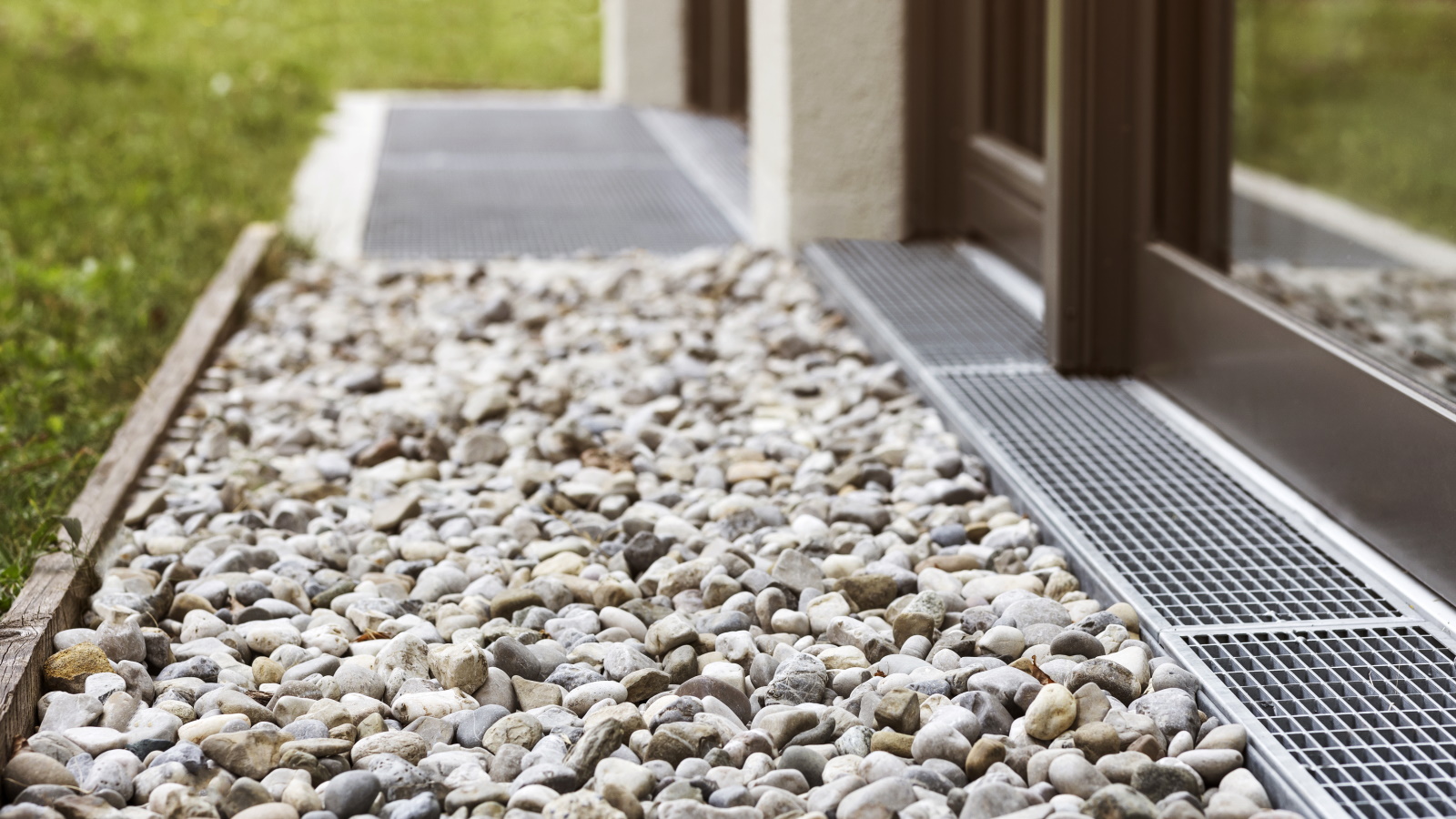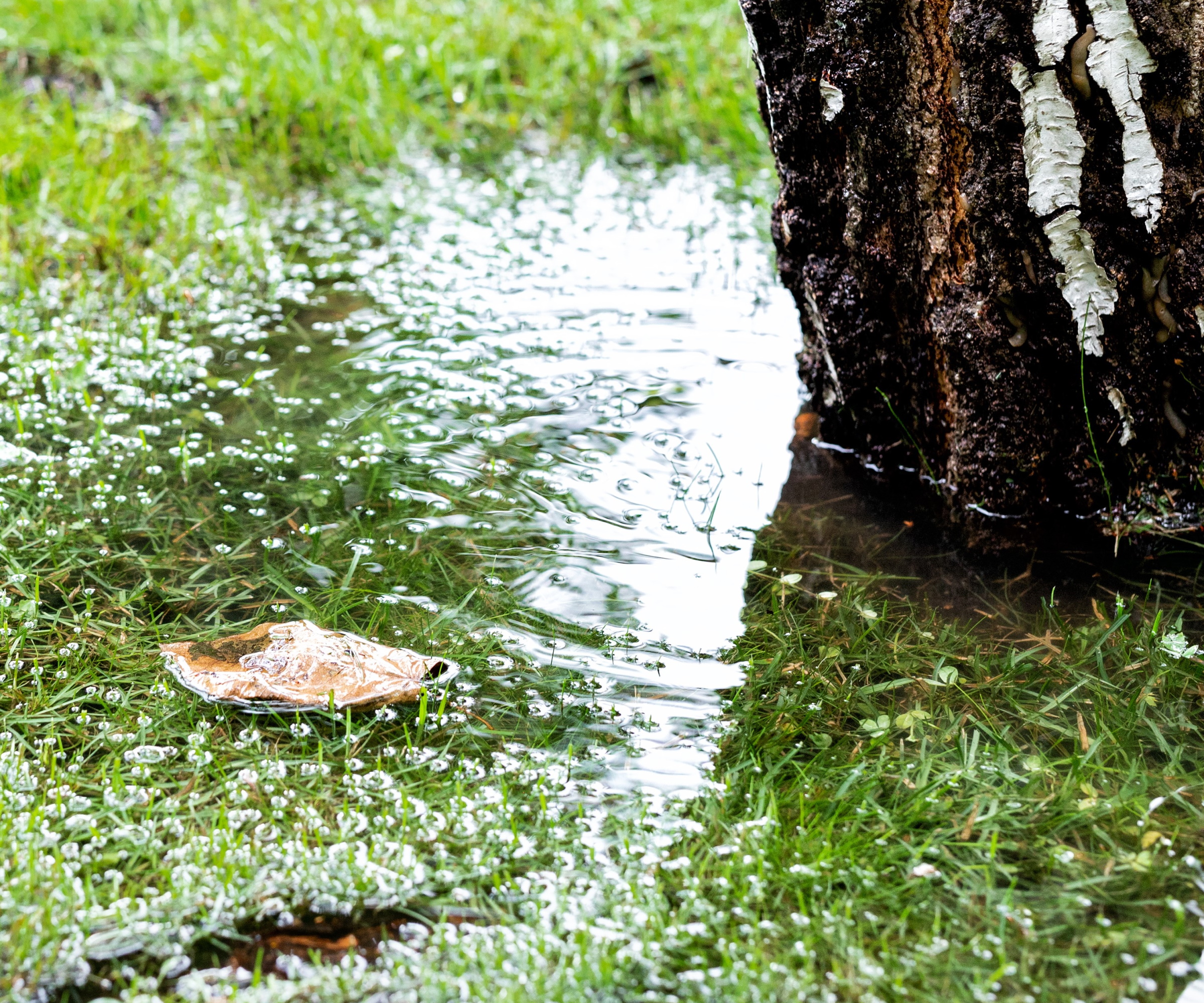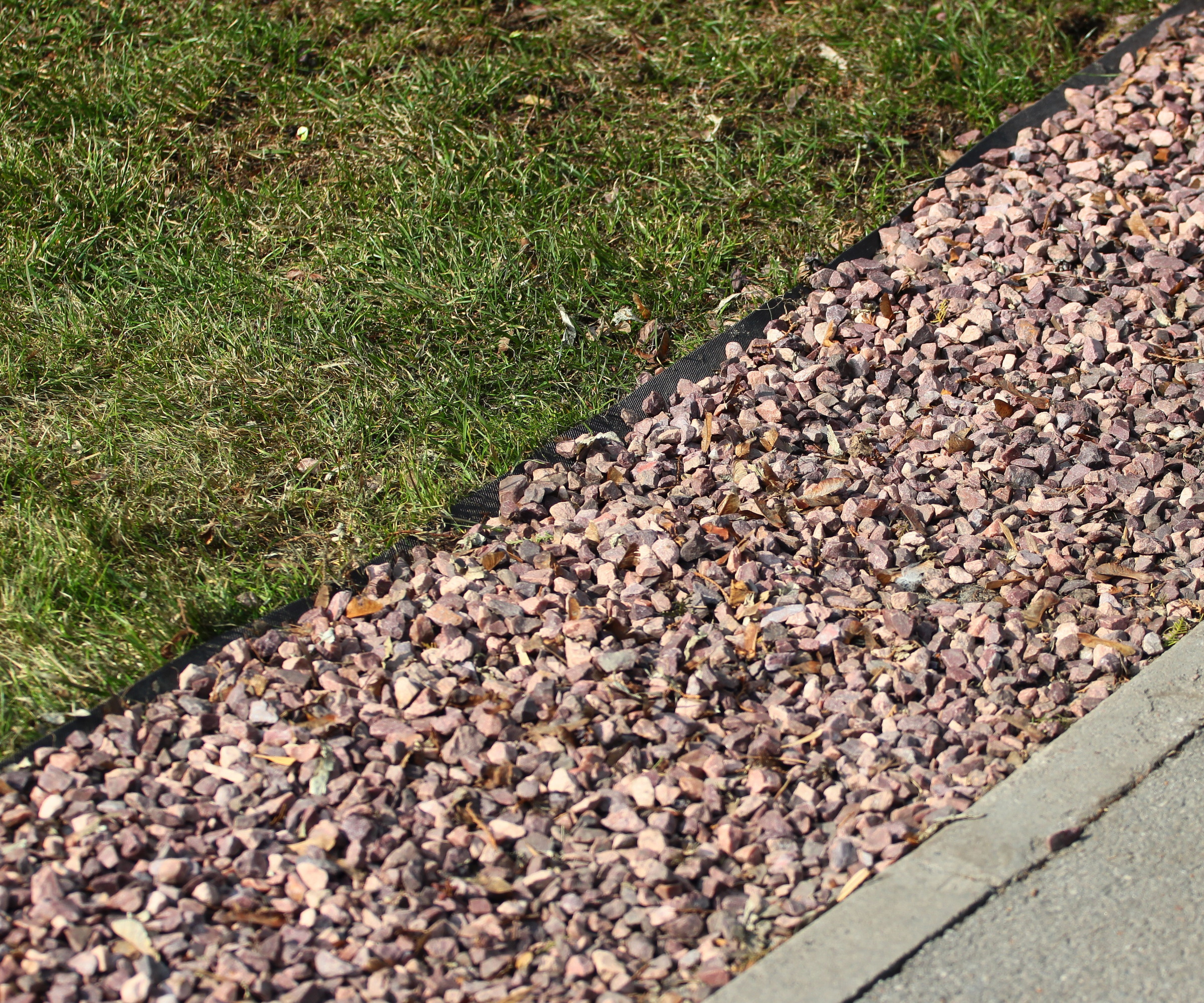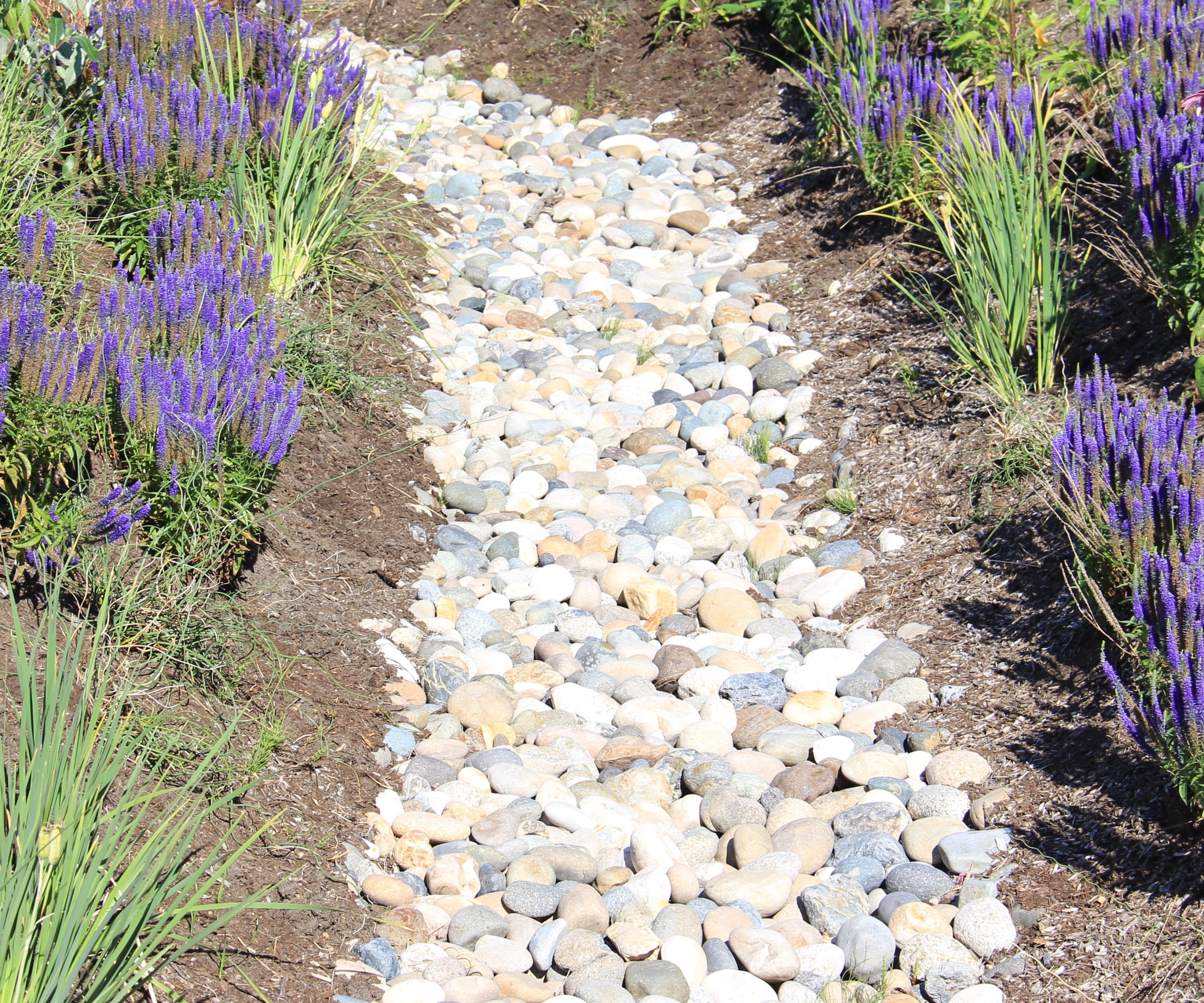
Garden drainage solutions might not be the most glamorous topic to read about when you are thinking about backyard ideas, but finding the right option for your outdoor space is important, particularly if you live in an area with sloping ground, clay-based soil or heavy and frequent rainfall.
At this time of year, when the ground can be saturated due to snowfall or wet weather, drainage issues can impact many homes and yards, with standing water visible and lawn areas under an inch or more of water. When drainage becomes a problem, finding a rapid solution is a principal concern.
There are many drainage options to consider when landscaping your yard, and seeking professional help from a landscaper is advised. One such option that I have used is known as the French drain. This method is quick to install and, in my experience, successful at easing drainage problems. Most, if not all, landscapers will be able to install a French drain quickly and with relative ease.
This basic principle of a French drain is to redirect excess water by draining it from one badly affected area of the yard to another less saturated area. This is done by digging a channel to lay a perforated pipe that can transport the water elsewhere. Simple, right? Read on to discover how this works, and when a French drain might be able to help in your backyard.

How to use French drain
There are many options to consider if you are struggling with drainage issues such as a waterlogged lawn in your backyard. A French drain might be the solution you're looking for.
How does a French drain work

Put simply, a French drain is a narrow channel or trench usually excavated by shovel. If you are digging a larger trench, a digger may be needed. The trench will move water from the problematic, waterlogged area, to an area where it can drain more freely. Identifying this route is an important first step, and a landscaper will be able to help you do this. This route will need to follow a slightly downhill, sloping course.
The trench should be lined with a permeable membrane to prevent blockage by soil and debris before laying a perforated pipe inside. The trench can then be backfilled with gravel and covered over. Water is then able to flow through the pipe and the trench, easing the pressure in the problematic, waterlogged area.
If possible, you could direct the trench towards a water feature in your yard, such as a pond, or perhaps an underground barrel or reservoir that you can then use to water your yard in the warmer months of the year. Alternatively, and the simplest option, is to direct the water to a more free-draining part of the yard that does not flood. Here, the water can freely and easily seep into the ground.
When to install a French drain

If you suffer from recurring drainage issues then it may be time to consider installing a French drain. This will be easier to identify during the colder and wetter months in fall and winter.
French drains, in my experience, can be particularly useful when there is uneven or sloping ground in your yard. Water will flow downhill, often causing waterlogging at the bottom of a slope. A French drain positioned at the base of a slope can significantly ease drainage pressure and eradicate the pooling of water on lawns and in garden borders.
Unless you have extensive DIY experience, it is recommended that you seek professional help when landscaping your yard, particularly as the redirection of water can have an impact on hard landscaping and building foundations.
This water barrel is a sustainable solution to reuse the rainwater in your garden watering whilst at the same time save on your water bill.
FAQs
Can you cover a French drain with grass?
Once your French drain is installed and protected with permeable membrane, you can cover with soil and grass, if desired. The membrane will prevent soil and debris from causing any blockages in the pipe. Covering your French drain with grass is a useful way to hide this effective drainage solution.
Using a French drain can help to ease drainage issues in a problematic area of your yard. Many other landscaping techniques can also help with drainage, including front yard paving ideas and driveway design using permeable paving that allows water to freely drain away.







